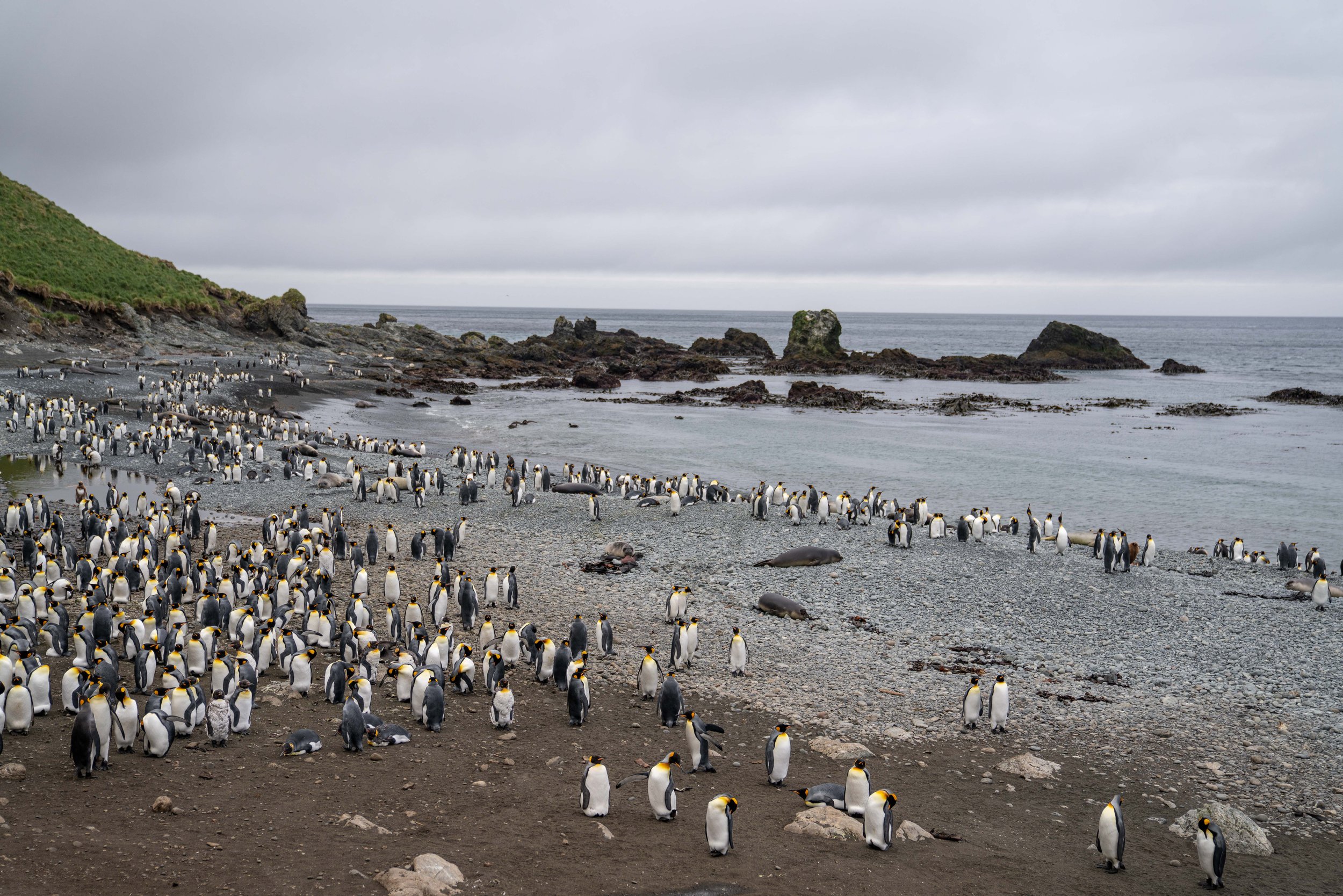
biosecurity
an important step in conservation
Because of the island’s protected status, a tremendous amount of care goes into protecting the plant and animal life on Macquarie (and the other subantarctic islands we visited), preventing the introduction of invasive species, and limiting the number of people that are allowed to set foot on the islands within a set period of time.
For us, this meant that we were taken through an extensive biosecurity protocol on the ship before we embarked into the zodiacs to go ashore. Each and every piece of clothing and equipment that we intended to bring onto the island had to be thoroughly cleaned and then inspected by one of the expedition team members. Any dirt had to be removed and our gear sanitized; backpacks and boots were vacuumed thoroughly; and tweezers were used to pick any debris out of clothing seams, zippers, and velcro–all of this to minimize the risk of bringing foreign seeds or spores onshore.
The wash room on board
Once the gear inspection was complete, we put on our outer layers inside “wash rooms” in the hold of the ship: knee-high rubber boots, waterproof pants, and a rain shell. Then we scrubbed and rinsed our pants and boots with water and sanitizing solution both before we left and when we returned to the ship.
We were not allowed to bring any food or drink to the island except for water. While photographing and exploring, we were allowed to crouch or kneel only, but not to sit, in order to minimize the dirt, pollen, seeds, and other particles that could potentially hitch a lift on our clothes back to the boat.
While this protocol was time-consuming, I genuinely appreciated its intent, and with daily practice we all got more efficient. It was truly a privilege to have the opportunity to set foot on an island as remote and protected as Macquarie, and I was happy to play my tiny part in ensuring that its unique qualities survive for others to see in the future.




